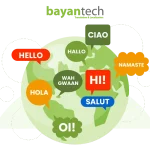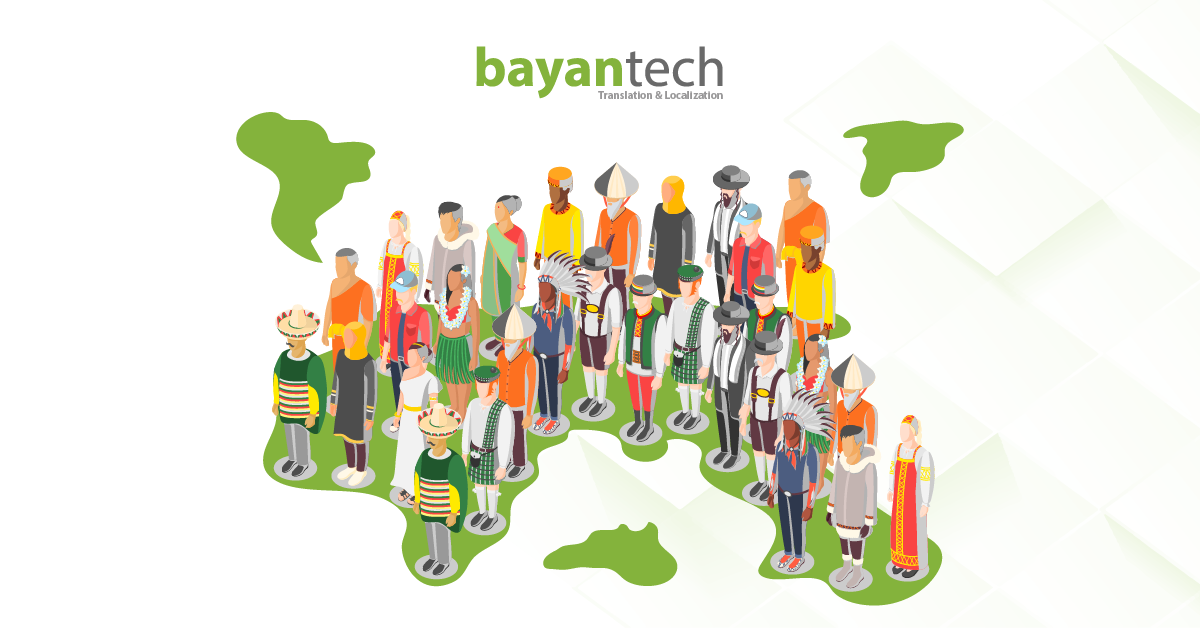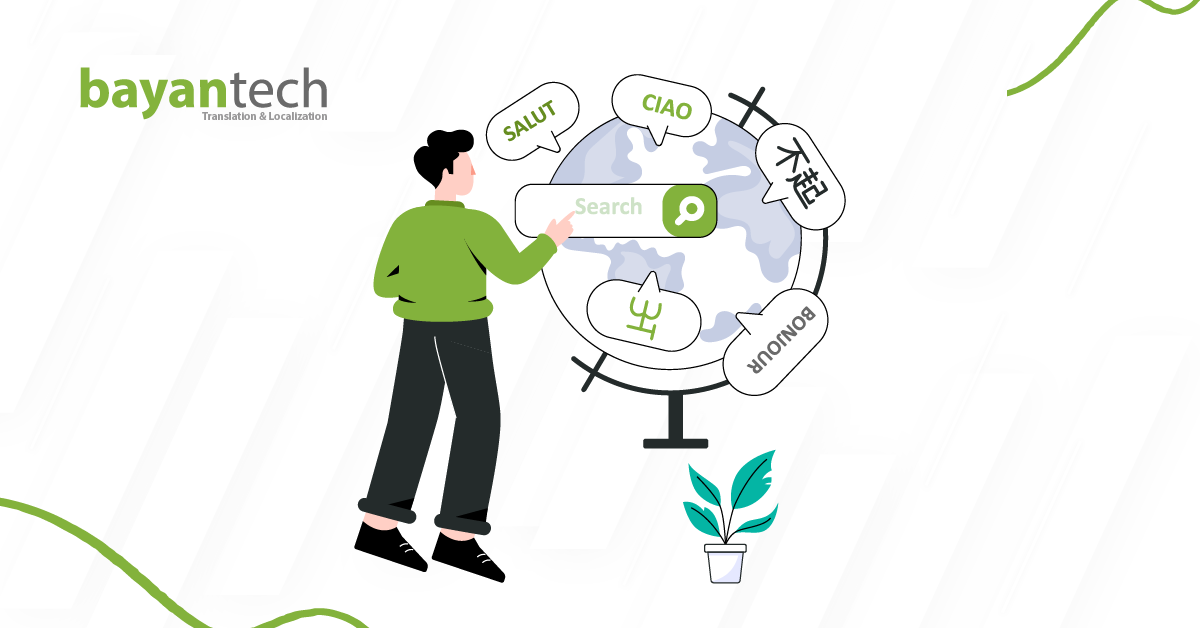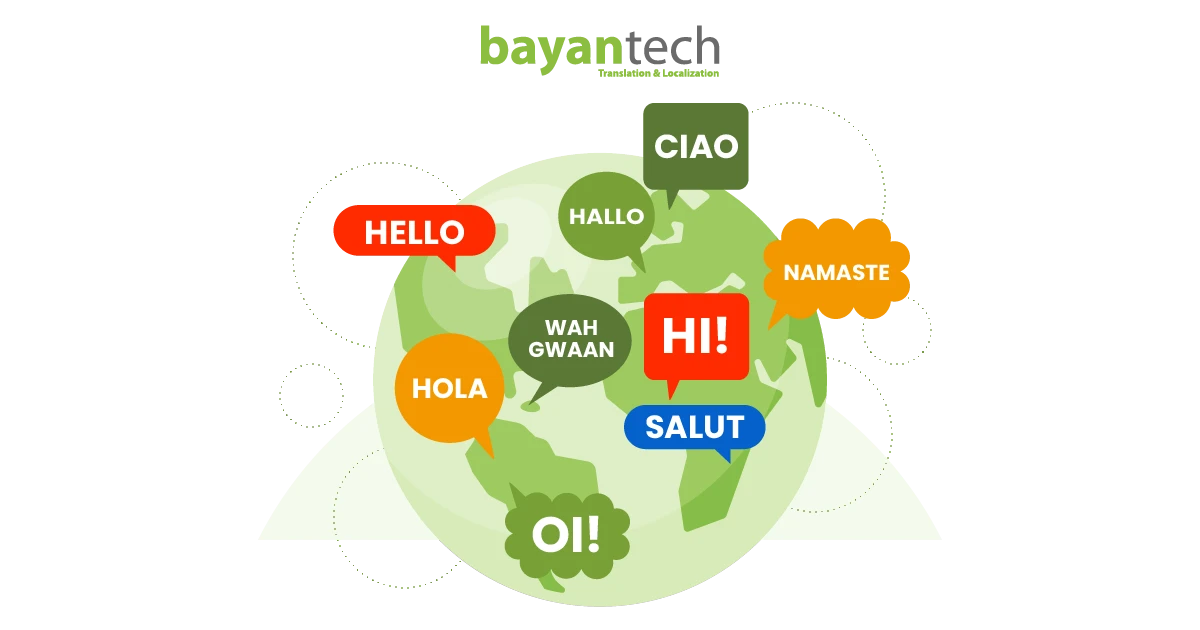Planning to localize your website or software? Then, you’ll need to learn two terms you’ll encounter frequently: “language” and “locale.” While they’re often used interchangeably, they actually refer to different concepts, especially in a technical context.
And understanding the difference between language and locale will help you build a smarter, more precise software localization strategy. You’ll know exactly which languages and cultural settings your content needs to support. So, let’s break it down with a simple, in-depth comparison.
What Is Language?
Language is a set of spoken and written rules that a group of people use to communicate and understand one another. With over 7,000 languages in use around the world today, a standardized system is essential for organizing and referencing them; this is where ISO 639 language codes come in. These international codes assign two- or three-letter identifiers to each language:
- “en” is English.
- “afr” is Afrikaans.
- “zh” is Chinese.
These codes are important in referencing a language in localization, translation, and language settings in software, where accurate referencing is critical.
What Is Locale?
Locale, on the other hand, goes beyond language; it includes regional and cultural preferences as well. A locale code typically starts with the ISO language code (mentioned above), followed by the region. For example, the locale code “en-US” translates into—pun intended—American English.
That means the website interface should reflect not only the language but also U.S.-specific elements like spelling, currency (USD), date formats (MM/DD/YYYY), and local payment and shipping methods.
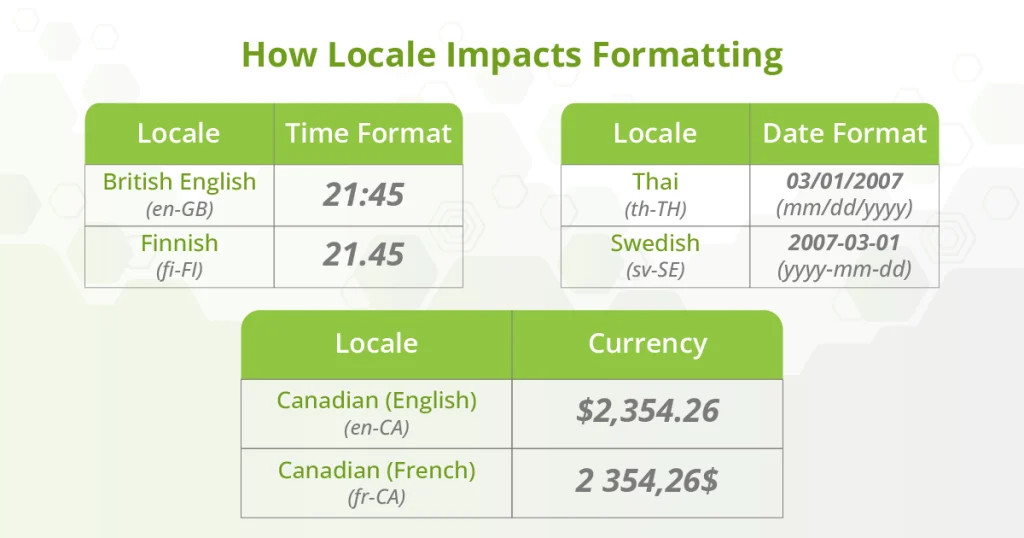
Key Differences: Locale vs Language
Scope
Language focuses solely on words. With translation and localization, content is accurately conveyed in the user’s native language.
Locale, on the other hand, includes the language plus regional and cultural elements, like date and time formats, currency, numeral systems, text direction, fonts, and even icons that vary by culture.
Code System
Language: Standardized ISO language codes
- “de” for German
- “ms” for Malay
- “ar” for Arabic
Locale: Combines the language code and region code, separated by a hyphen or underscore
- “en-US” for English (United States)
- “ar-BH” for Arabic (Bahrain)
- “de-DE” for German (Germany)
Application
Language determines the translation work required—accurate, native-level translation done by professional linguists.
Locale involves localization and cultural adaptation, for example, adapting spelling (“color” vs. “colour”).
Note
A single language can exist in multiple locales, like English in the US, UK, and Canada, or Arabic in Egypt, Saudi Arabia, and the UAE. And one locale can support multiple languages, such as Switzerland, which uses French, German, and Italian.
The Role of Locale in Software Localization
User Experience
In today’s global market, users expect software to reflect their local norms and preferences. Something as simple as a date format or currency symbol being “off” can cause confusion, or worse, make your product feel irrelevant.
By tailoring user interfaces based on locale (e.g., “mm/dd/yyyy” in the U.S. vs. “dd/mm/yyyy” in the UK), you enhance clarity, trust, and overall usability.
Cultural Adaptation
Locale allows your software to resonate on a cultural level. For instance, recognizing Diwali in India or Día de los Muertos in Mexico within your UI, offers, or content can make users feel seen and valued. This localization strategy boosts engagement and builds long-term customer loyalty.
Streamlined Development
On the backend, using locale identifiers in programming makes development more efficient. Instead of hardcoding region-specific elements, developers can use frameworks that automatically adjust things like date formats, number styles, or even layout direction for right-to-left languages.
This approach reduces manual work, ensures consistency, and makes your software more scalable and localization-ready.
Best Practices for Using Locale and Language in Localization
- Define Locale-Specific Settings
Start by identifying which components need to be culturally adapted for your global users, such as currency symbols, time zones, date formats, number formats, and even measurement units.
- Leverage ISO Standards
Stick to ISO 639 language codes and region codes to maintain consistency and avoid technical issues. For language codes, choose either the two-letter (e.g., “en”) or three-letter (e.g., “eng”) format and be consistent. The same goes for locale formatting: pick either the hyphen (e.g., “en-US”) or underscore (e.g., “en_US”) style and use it uniformly across your system.
- Automate Locale Detection
Use tools that automatically detect a user’s locale preferences to streamline the localization experience. Websites can identify locale settings through browser configurations, IP addresses, cookies, saved preferences, or even manual user selection.
Common Challenges in Locale and Language Management
- Inconsistent Coding Practices
Inconsistency in code usage across your project can lead to bugs and integration issues. Pick one style and stick to it throughout your localization pipeline to avoid issues.
- Managing Regional Differences in Locale
One of the trickier aspects of localization lies in adapting units of measurement, especially when they vary subtly between regions. A good example is weight: the U.S. uses the U.S. Customary system, while most other countries use the metric system. This can lead to confusion with units like ton (imperial) and tonne (metric)—pronounced the same but differing in both spelling and value:
- Ton (imperial) = 1,016.047 kg
- Tonne (metric) = 1,000 kg
Accidentally mixing the two can cause serious errors, particularly in technical, industrial, or shipping contexts.
- Fallback Mechanisms
Not all languages or locales may be available right away. That’s why fallback mechanisms are critical. If a user’s preferred locale isn’t supported, a smart fallback to a default language or region ensures the content is still readable. This helps maintain user satisfaction and minimizes friction in the user experience.
Start Localizing with bayantech Today!
Ready to take your website or app localization to the next level? Our team of professional translators and localization specialists is here to help you deliver content that’s tailored to each user’s specific locale, ensuring clarity, cultural relevance, and a seamless user experience.
Request your free quote today and kick off your locale-based content customization with bayantech!




